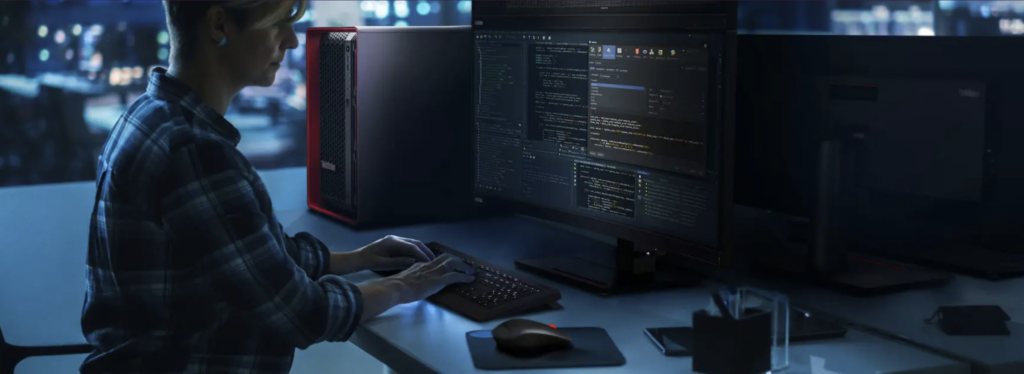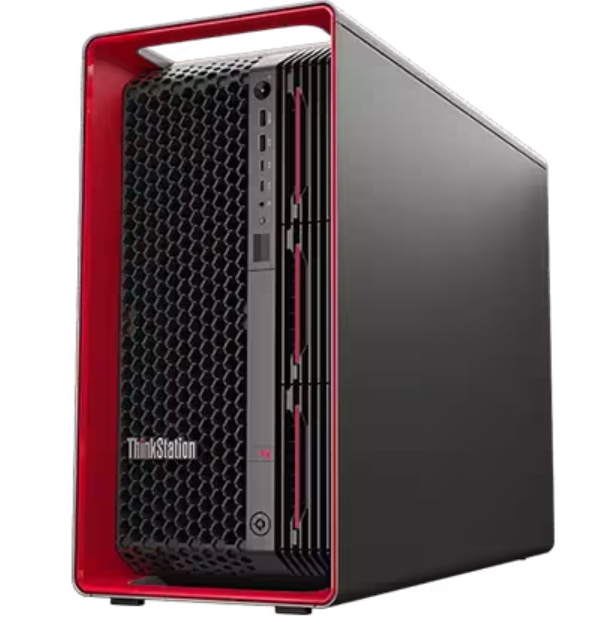Intel expanded its workstation processor line in late August with the introduction of the Xeon W-3500 and Xeon W-2500 desktop processors. The Xeon W-3500 and W-2500 CPUs are designed to offer platform characteristics that enhance artificial intelligence and machine learning processes. Lenovo will offer the new Intel processors in its ThinkStation PX, P7, and P5 series workstations.

Workflows in data science, generative AI, M&E, 3D rendering, and CAD simulation are growing more reliant on powerful CPU and GPU components. The W-3500 and W-2500 have up to 60 cores and 120 threads, respectively, which greatly improves multi-threaded performance. The new 5th-generation Xeon processors also offer up to 2.4´ faster rendering over previous generation.
| Intel Xeon w9 Processors | Intel Xeon w7 Processors | Intel Xeon w5 Processors | |
| Processor Cores | Up to 60 (60P + 0E) | Up to 32 (32P + 0E) | Up to 20 (20P + 0E) |
| Intel Hyper-Threading Technology | Yes | ||
| Total Processor Threads | Up to 120 | Up to 64 | Up to 40 |
| Intel Smart Cache (L3) | Up to 112.5MB | Up to 82.5MB | Up to 52.5MB |
| Intel Turbo Boost Max Technology 3.0 Frequency | Up to 4.8 GHz | ||
| Processor Base Frequency | Up to 2.2 GHz | Up to 2.7 GHz | Up to 3.2 GHz |
| CPU PCIe 5.0 Lanes | 112 | ||
| Maximum Memory Speed | DDR5 4800 MT/s | ||
| Memory Channels | 8 | ||
| Maximum Memory Capacity | 4TB | ||
| Maximum Turbo Power | Up to 462W | Up to 402W | Up to 360W |
| Processor Base Power | Up to 385W | Up to 335W | Up to 300W |
Table 1: Intel Xeon W-3500 processors comparison.
The Xeon W-3500 is geared for high-end workstations, with the Xeon W-2500 focused on the mainstream market.
The ThinkStation PX that will feature the Xeon W-3500 processor is a top-of-the-line workstation with an Aston Martin-inspired chassis, support for up to 4´ Nvidia workstation graphics cards, and is rack-optimized for data center flexibility.

| Intel Xeon w7 Processors | Intel Xeon w5 Processors | Intel Xeon w3 Processors | |
| Processor Cores | Up to 26 (26P + 0E) | Up to 18 (18P + 0E) | Up to 10 (10P + 0E) |
| Intel Hyper-Threading Technology | Yes | ||
| Total Processor Threads | Up to 52 | Up to 36 | Up to 20 |
| Intel Smart Cache (L3) | Up to 48.75MB | Up to 37.5MB | Up to 26.25MB |
| Intel Turbo Boost Max Technology 3.0 Frequency | Up to 4.8 GHz | Up to 4.6 GHz | |
| Processor Base Frequency | Up to 3.0 GHz | Up to 3.5 GHz | |
| CPU PCIe 5.0 Lanes | 64 | ||
| Maximum Memory Speed | DDR5 4800 MT/s | DDR5 4400 MT/s | |
| Memory Channels | 4 | ||
| Maximum Memory Capacity | 2TB | ||
| Maximum Turbo Power | Up to 300W | Up to 288W | Up to 222W |
| Processor Base Power | Up to 250W | Up to 240W | Up to 185W |
Table 2: Intel Xeon W-2500 processors comparison.
Lenovo is emphasizing that the new ThinkStation PX, P7, and P5 configurations are geared for AI development. Intel’s Xeon W processors feature Deep Learning Boost, Advanced Matrix Extensions, and Vector Extensions 512. With the new ThinkStation series containing the Xeon W-3500 and W-2500 processors, AI and data science specialists can rapidly create, test, and deploy AI models for retail recommendation engines, natural language processing (NLP), surveillance and security, and generative design in manufacturing.